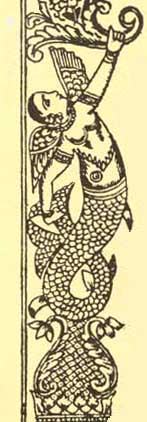FIVE == METRICAL
FEET
Traditional Urdu prosody uses a
set of words called afāʿīl [afaa((iil] which
are of great practical value to the student. Each of the afāʿīl
both names and metrically embodies one particular kind of foot, or
rukn [rukn]. A suitable inventory of the afāʿīl
can thus provide an accurate account of the metrical feet traditionally
used in Urdu poetry. Furthermore, the afāʿīl
are used in every poetic and critical context, in every formal and
informal discussion of Urdu meter. Therefore the student will certainly
need and want to know them.
The afāʿīl
all originate from the Arabic three-letter verb root { f
+ ʿ + l }, or faʿl
, meaning "to do." They are derived in fixed ways, and transformed
according to fixed rules, which were developed in the context of classical
Arabic and Persian poetic theory. If you want to study the whole set
of afāʿīl systematically, you'll find some
suitable works listed in the Bibliography.
Our approach here is strictly practical: we will look only at the
afāʿīl actually used in Urdu poetry.
The afāʿīl
are considered to be of two kinds: a small number of original or sālim
[saalim] ones, and a large number of variant or muzāʿf
[muzaa((f] forms derived from these. When a line of poetry can be
divided into feet in more than one way, the best division is considered
to be the one which relies more on original afāʿīl
, and less on variants.
The [afaa((iil] are listed below,
with internal syllable divisions indicated, along with the syllable
patterns they represent and embody. The [saalim] ones are starred.
The order in which they are given is intended to make them easily
findable: those with the greatest number of initial long syllables
are listed first.
(= = =) [maf-((uu-lun]
-- { mafʿūlun }
(= = - =) [mus-taf-((i-lun]*
-- { mustafʿilun }
(= = -) [maf-((uu-l] --
{ mafʿūl }. Usually
occurs as the first foot, except in rubāʿī
[rubaa((ii].
(= =) [fa((-lun] -- {faʿlun
}
(= - = =) [faa-((i-laa-tun]*
-- { fāʿilātun }
(= - = -) [faa-((i-laa-t]
-- { fāʿilāt }
(= - =) [faa-((i-lun]*
-- { fāʿilun }
(= - - =) [muf-ta-((i-lun]
-- {muftaʿilun }.
Rare.
(= -) [fa((-l] -- {
faʿl }
(=) [fa((] -- {
faʿ }.
Usually occurs as the last foot; rare except in [rubaa((ii]
(- = = =) [ma-faa-((ii-lun]*
-- {mafāʿīlun }
(- = = -) [ma-faa-((ii-l]
-- { mafāʿīl }.
Rarely occurs as the first or last foot.
(- = =) [fa-((uu-lun]*
-- { faʿūlun }
(- = - =) [ma-faa-((i-lun]
-- { mafāʿilun }
(- = -) [fa-((uu-l] --
{ faʿūl }
(- =) [fa-((al] -- {
faʿal }
(- - = =) [fa-((i-laa-tun]
-- { faʿilātun }
(- - = - =) [mu-ta-faa-((i-lun]*
-- { mutafāʿilun }
. Rare.
(- - = -) [fa-((i-laa-tu]
-- { faʿilātu }.
Very rare; almost always occurs as the first and third foot.
(- - =) [fa-((i-lun] --
{ faʿilun }. Almost
never occurs as the first foot.
In the above list there are two
afāʿīl with double identities. These can
be, and are, scanned in two different ways. They are:
{ faʿl
}, scanned both as [fa((-l],
(= -), and as [fa-((al], (- =)
{ faʿlun
}, scanned both as [fa((-lun],
(= =), and as [fa-((i-lun], (- - =)
There is nothing to be done about
this; they must simply be accepted as parts of the traditional system.
Modifications in them to eliminate ambiguity have often been proposed,
but haven't been adopted in practice.

